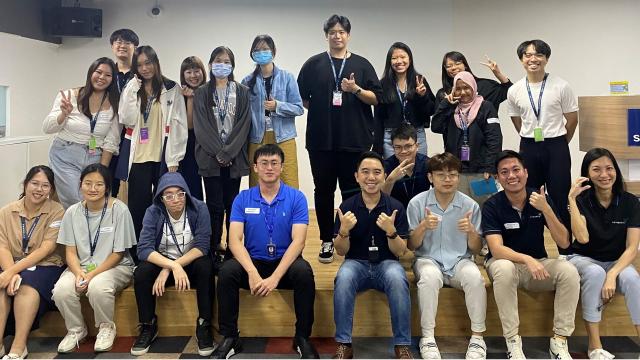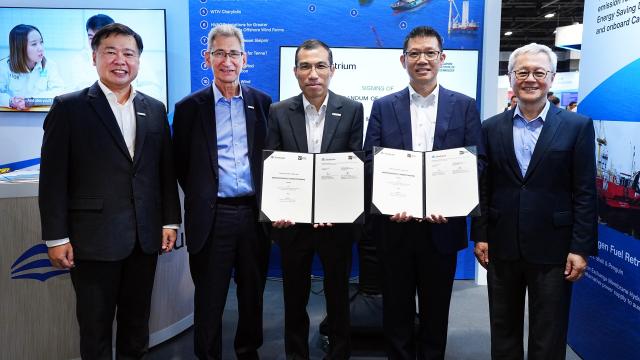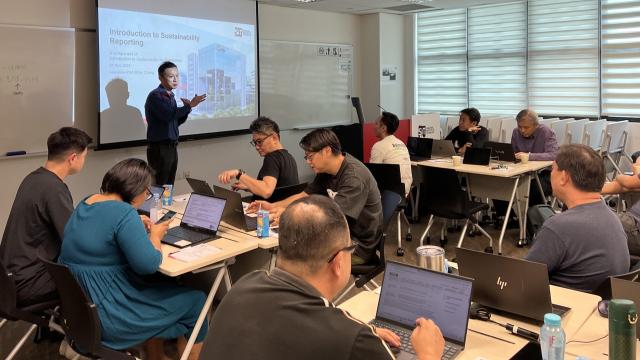The Singapore Amazing Flying Machine Competition (SAFMC) is an annual event organised by DSO National Laboratories that invites participants to push the boundaries of innovation by creating extraordinary flying machines. Find out how a group of final-year SITizens reading the Mechatronics Systems degree unexpectedly won second prize in the competition.
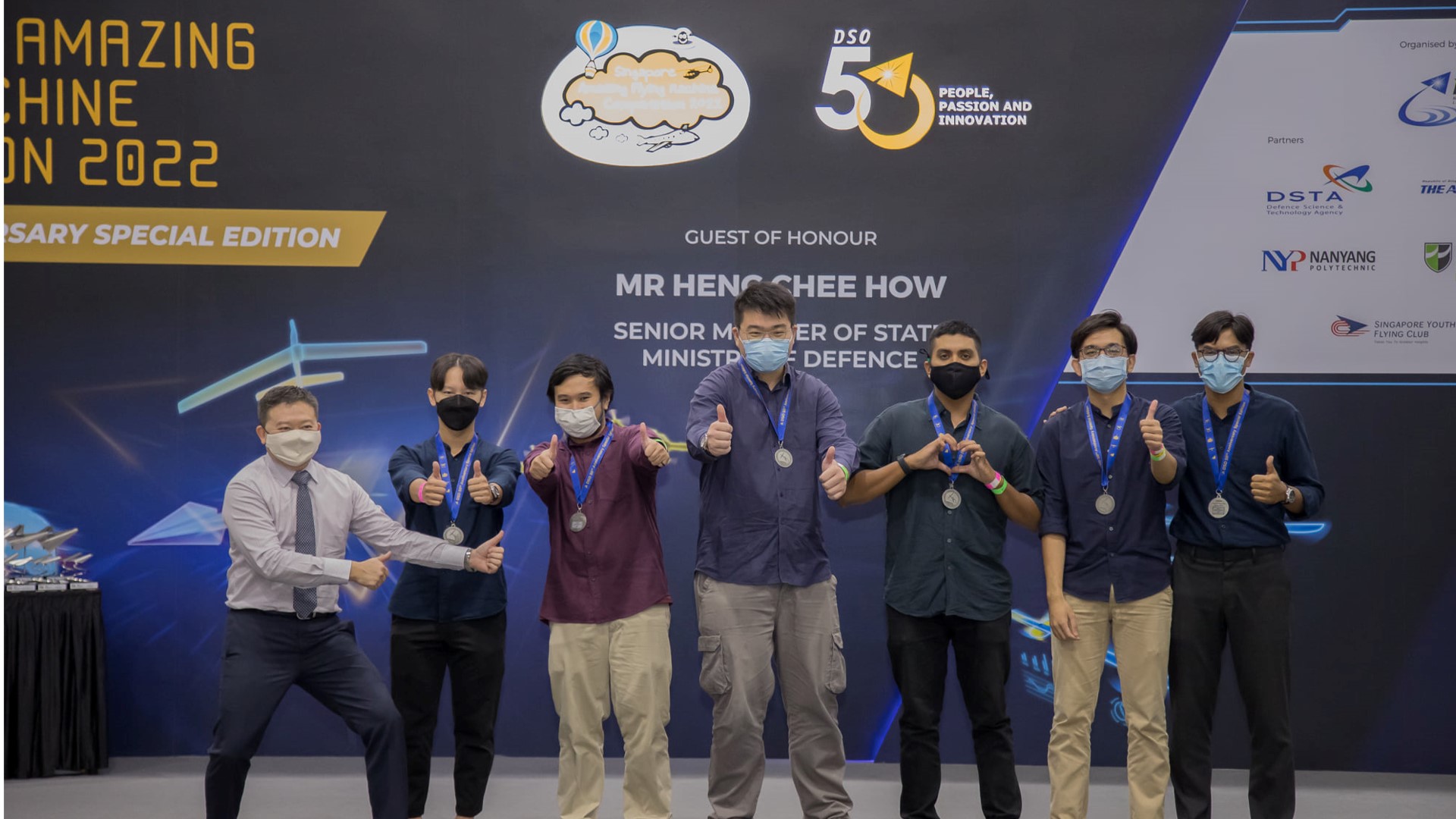
(From L to R) DSO representative with TEAM SIT members: Michel Shane Keh, Muhammad Iskandar, Louis Yap, Ahmad Faruq bin Ahmad Zafir, Muhammad Syahiddin, and Abrisam Durrani at the prize giving ceremony. (Photo: DSO National Laboratories)
Final-year Mechatronics Systems students Faruq Zafir, Michel Shane Keh, Muhammad Iskandar, and Muhammad Syahiddin were in the thick of their final trimester when they heard about the Singapore Amazing Flying Machine Competition organised by DSO National Laboratories. Seeing how their final-year project (FYP) was also related to drones, A/Prof Wee Liang Boon, the students’ FYP supervisor, encouraged them to take part in the competition.
Faruq Zafir, group leader and project manager of the team, which they named TEAM SIT, said, “At the time, we were afraid that we would not be able to cope with our FYP on top of our workload for the trimester. But A/Prof Wee encouraged us to take part, as it would be a good experience and help boost our career prospects. So, despite feeling that the odds were against us, we decided to take part and roped in two more members, Louis Yap and Abrisam Durrani, to be part of the madness!”
The Challenge
This year’s event was a special one as it coincided with DSO National Laboratories’ 50th Anniversary. TEAM SIT decided to enter in category E of the competition; it was the first time DSO National Laboratories created a swarm category as one of the challenges in the competition.
Teams in category E were tasked to design and build a swarm of 10 to 25 drones to compete in an obstacle course. TEAM SIT was up against four other teams, including two teams from the Singapore University of Technology and Design, and one team of graduate students from the National University of Singapore in affiliation with Temasek Laboratories.
There were two parts to the competition: the video submission and the demonstration. For the video submission, teams had to present the prototypes of their solutions. Meanwhile, the demonstration comprised two rounds with a set-up time of 20 minutes and a mission runtime of 10 to 15 minutes each.
Working Against the Clock
With only two months to prepare for the competition, TEAM SIT had very little time to deliberate over the details. They quickly decided on the drone’s model and conducted most of their research online to develop the solution. Another time-saving strategy was to rely on commercial off-the shelf products instead of building components from scratch.
After exploring different ideas during the initial development, the team came up with the idea to utilise mission pads and carpets to provide navigation assistance, which served as a visual fiduciary system. When a drone detected the mission pads and carpets, it would adjust its movements in the correct direction. The team just needed to place the pads correctly.
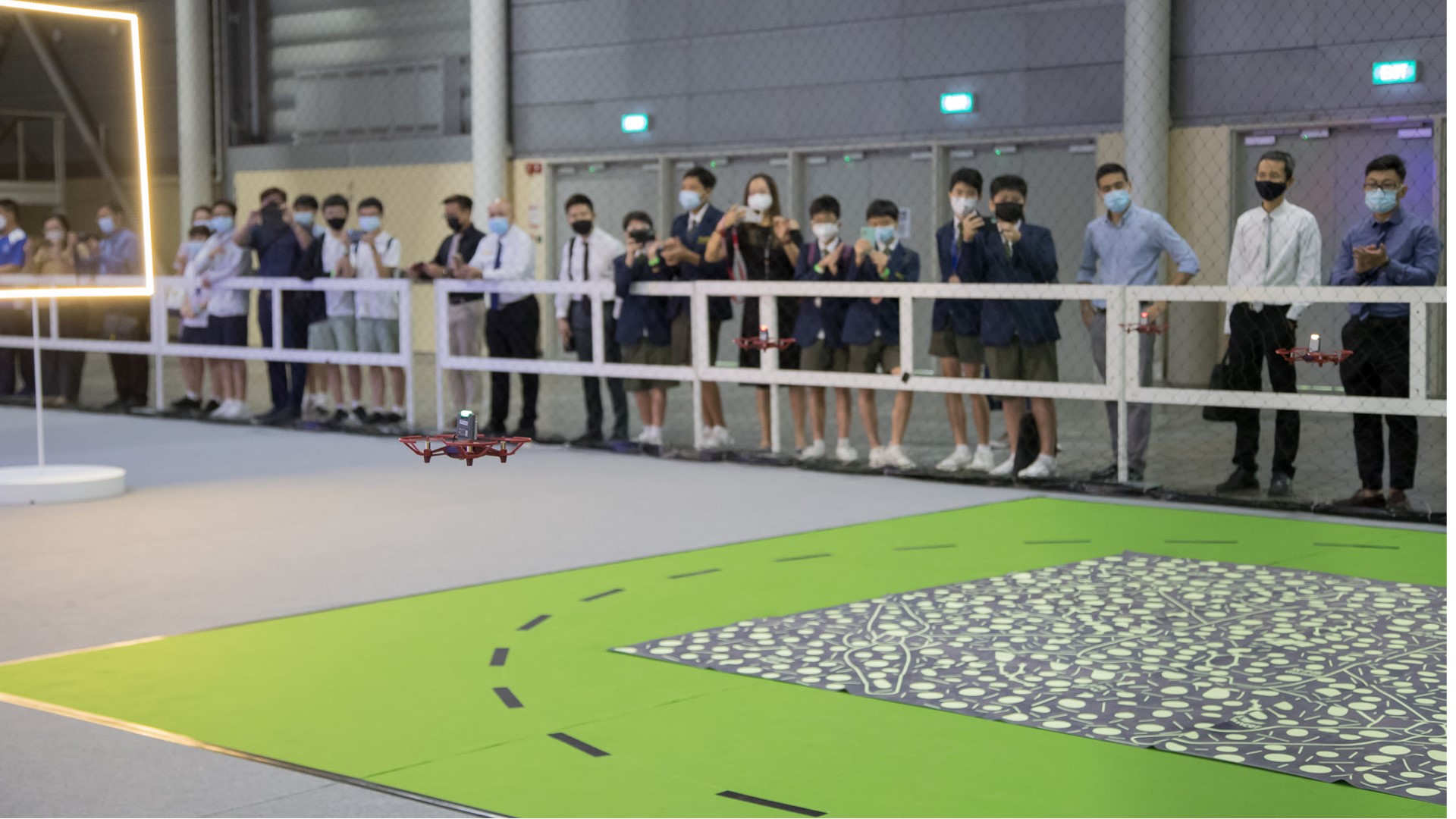
TEAM SIT’s demonstration of their drone using the mission carpet on demo day. (Photo: DSO National Laboratories)
Within the obstacle course, there were three different challenges to overcome. First, the drones had to take off in a circular formation and maintain the formation as they moved towards the first obstacle, which was a 2.5-metre wall. While maintaining the same formation, the drones then had to clear the height of the wall before moving towards the next obstacle, which consisted of randomly placed poles.
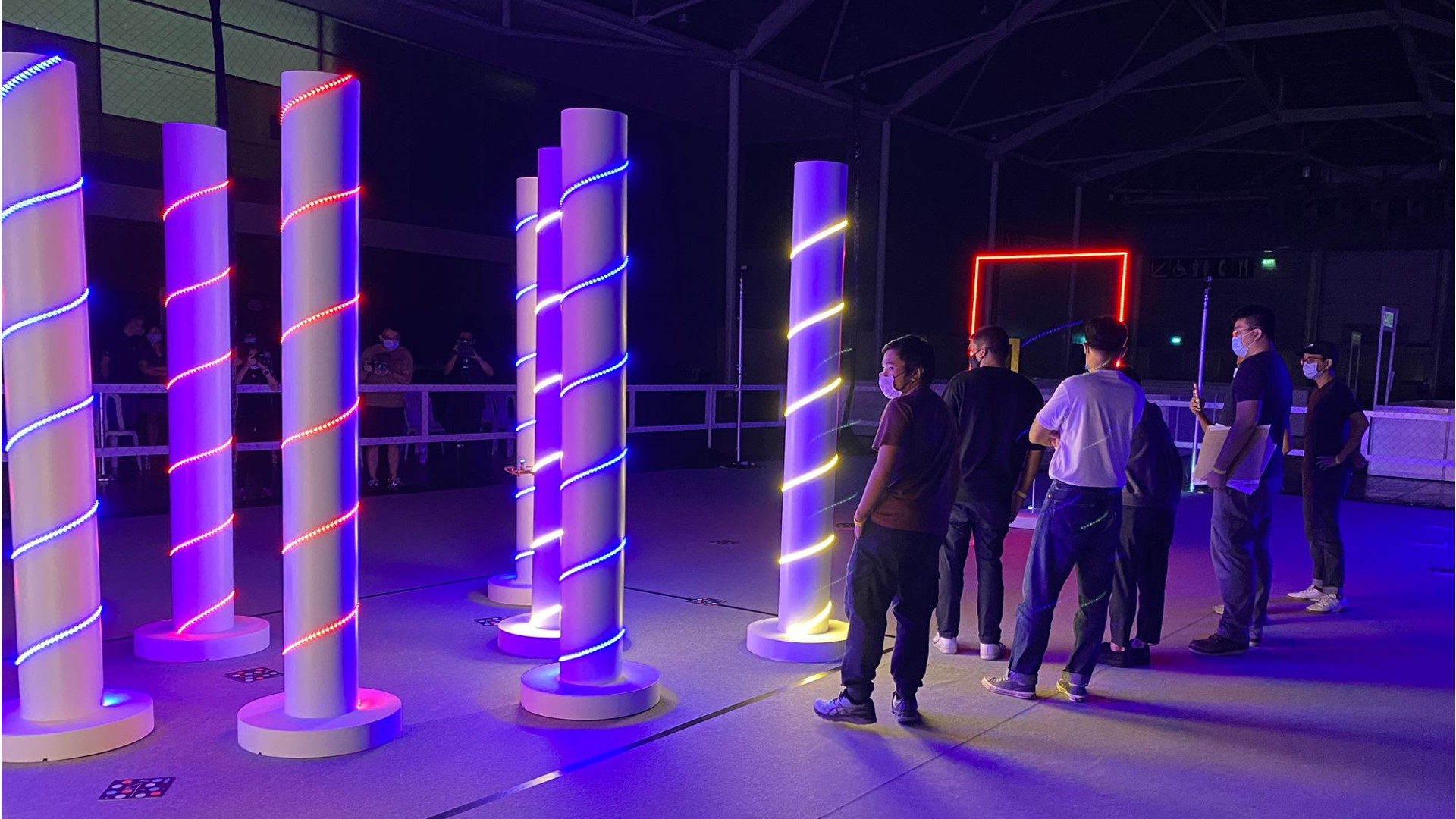
Team members at the pole obstacles surveying the placement of visual fiducial during the trial run. (Photo: DSO National Laboratories)
The individual drones had to navigate around the poles with the help of the mission pads before heading towards the next obstacle, which consisted of a series of hula hoops of differing shapes. Finally, the drones had to move to the mission carpet to await the rest of the drones before initiating a landing sequence.
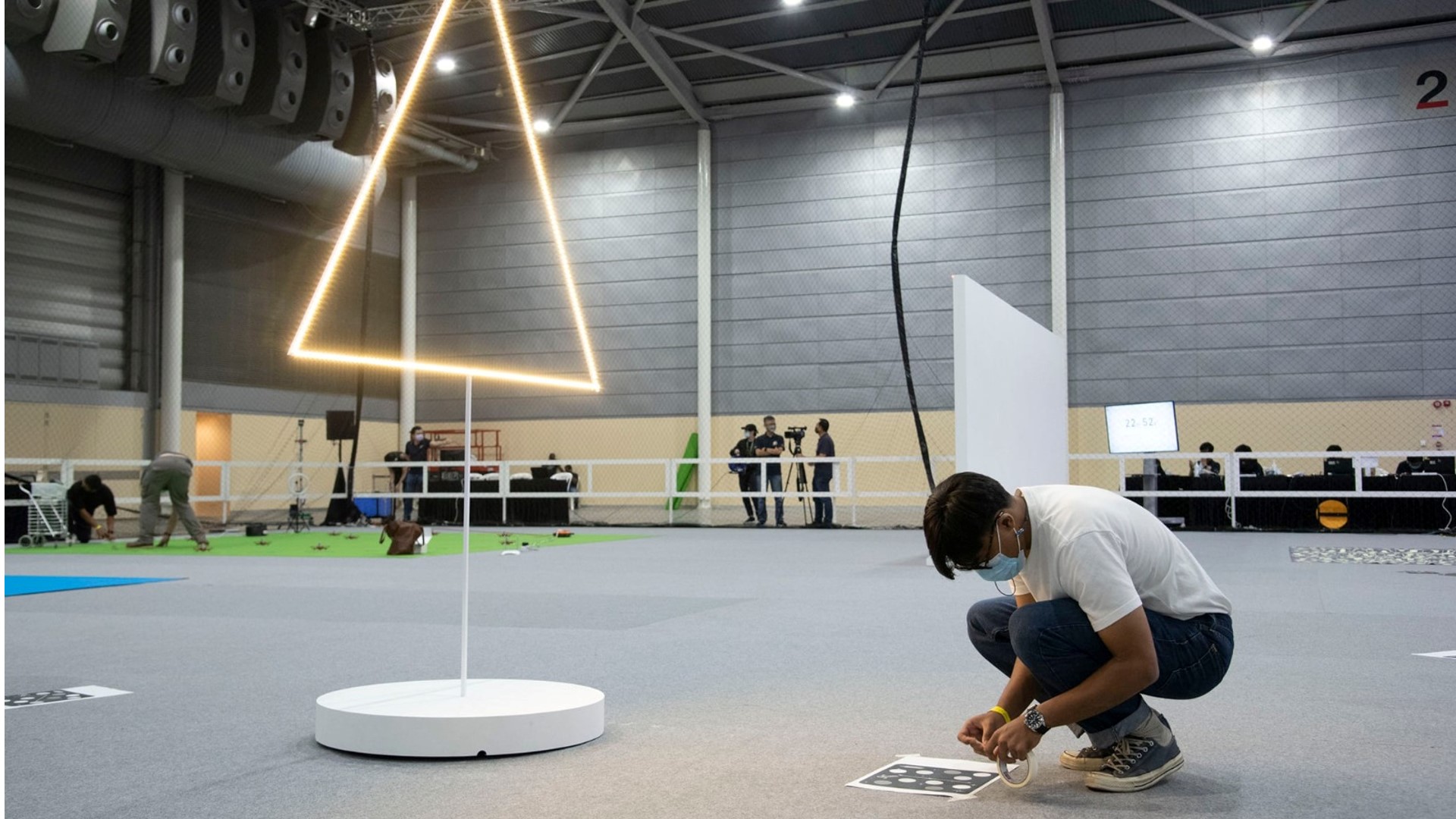
Laying out the solution during preparation time. (Photo: DSO National Laboratories)
Overcoming Obstacles
As the saying goes: what can go wrong, will go wrong! TEAM SIT had to work closely together and leverage on each team member’s strengths to overcome unexpected glitches. In addition to technological limitations, there were also hardware issues to contend with. The SITizens had to stay nimble and changed their plans accordingly when the drones did not work as intended.
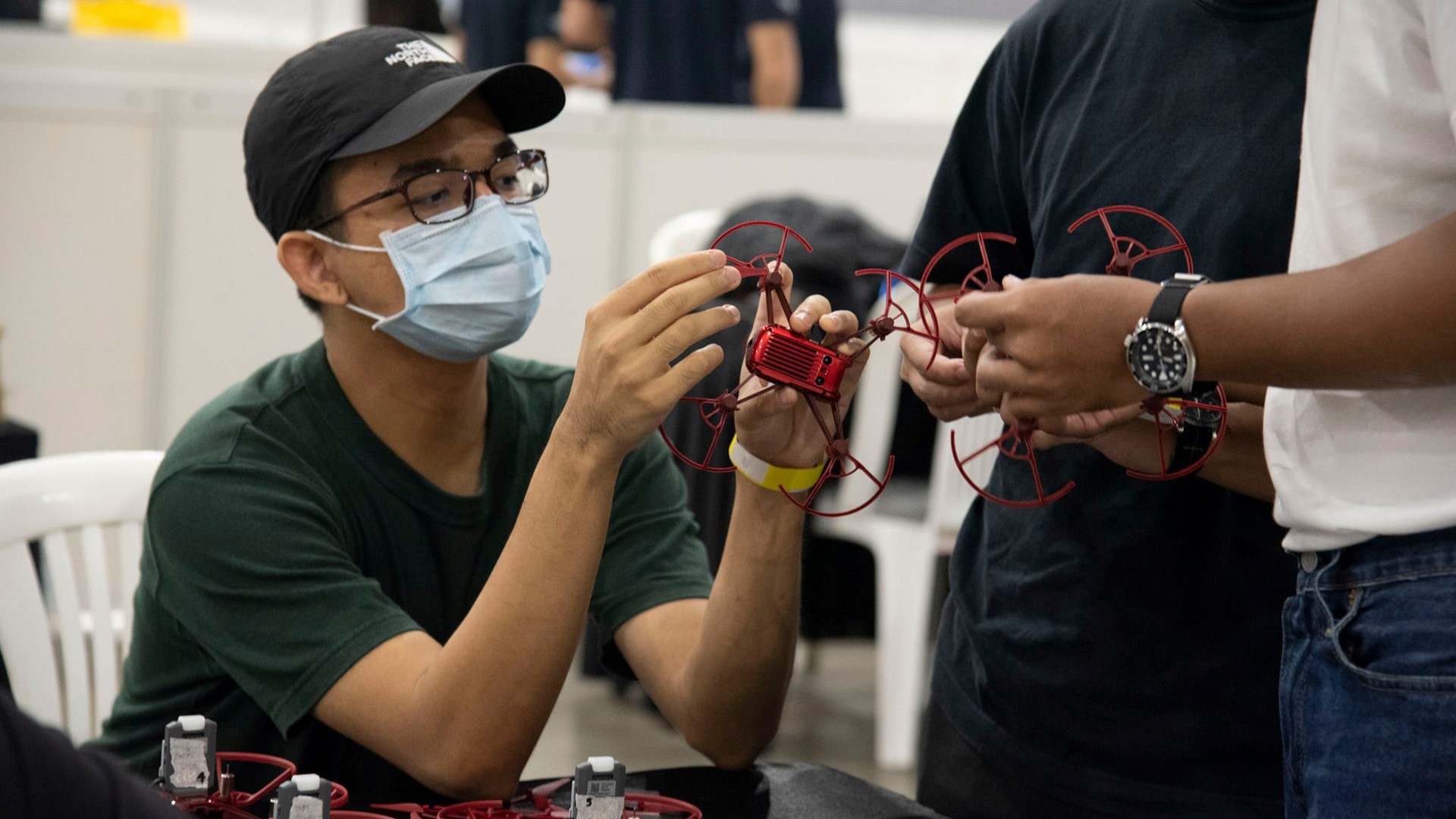
Team member Syahiddin adjusting the drone wings. (Photo: DSO National Laboratories)
The team also had to beef up their skills on Python, a software language for the drone’s software development kit. Having a strong grasp of C and C++ programming helped the team speed up on the familiarisation process.
Keeping it Simple FTW (For the Win)
This competition not only required technical skills, but good time management, project management, and planning skills. The team was able to work efficiently and effectively by dividing the tasks based on everyone’s capabilities. Perhaps keeping the solution simple also helped. It enabled the team to formulate a neat swarm flight control strategy, coupled with algorithms, to overcome the obstacles.
Faruq said, “We had no expectations whatsoever and were surprised at what we managed to achieve!”
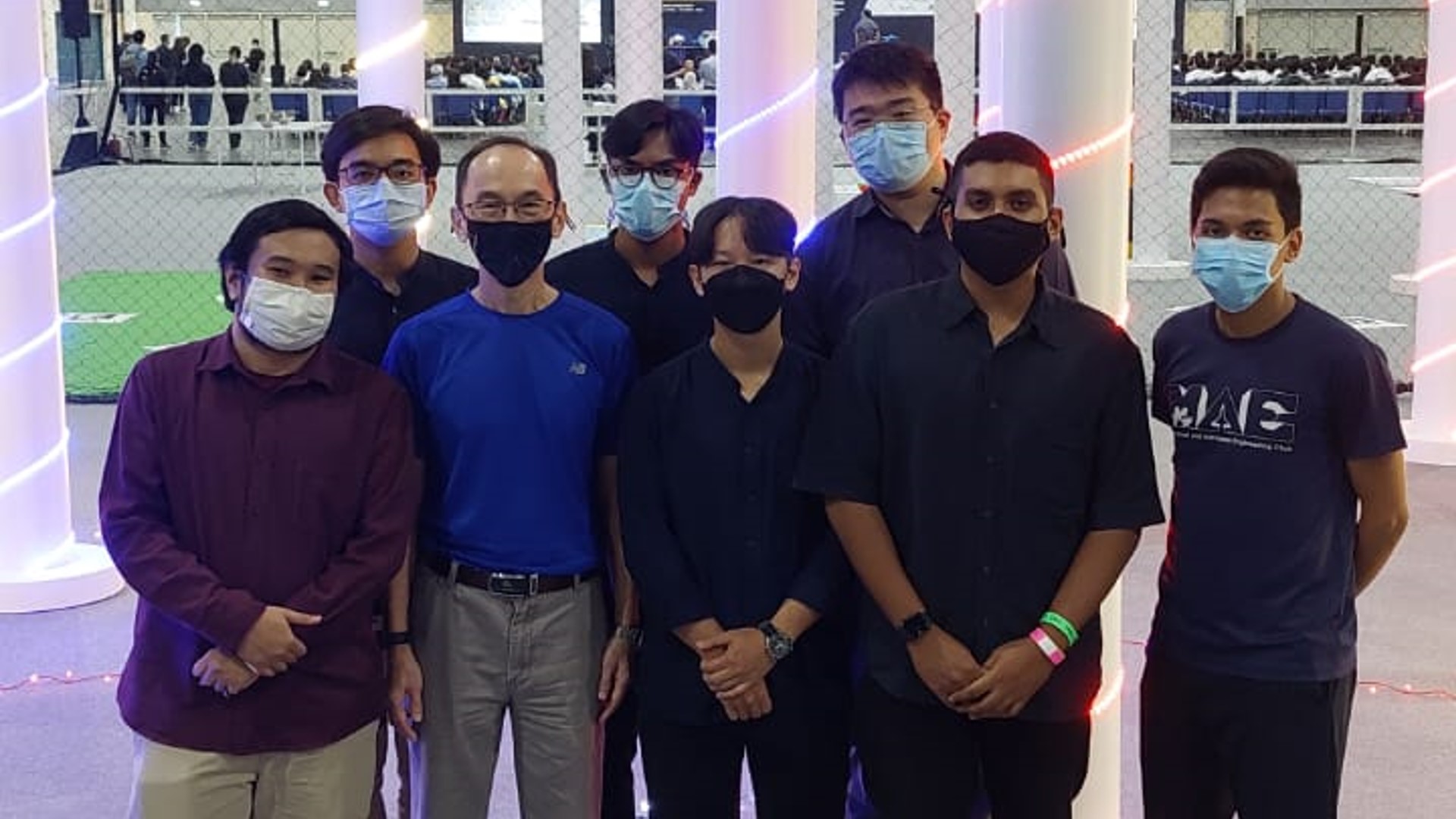
TEAM SIT with A/Prof Wee (front row, 2nd from left) and SIT researcher Faheem Fawzi (far right) on competition day. (Photo: DSO National Laboratories)
The SITizens are grateful to A/Prof Wee, who was not only their FYP supervisor, but their mentor throughout the competition. They also credited Dr Paw Yew Chai and SIT researchers Faheem Fawzi and Murteza Zakir, who helped facilitate various requirements for the competition and provided moral support on competition day.
Iskandar said, “A/Prof Wee gave us a lot of guidance when we encountered problems and he was the one who suggested that we simplify our solution. He also helped investigate the potential features and technical issues related to our drone. We owe him a lot!”
A/Prof Wee is proud of the achievements of this resilient team and enjoyed working with TEAM SIT.
He said, “They encountered many setbacks and failures all the way from the preparation stage to competition day. However, each time these SITizens faced a hurdle, they were able to stay focused and come up with an effective solution. I think the rigorous training they went through at SIT, as well as their enduring spirit played an important part in developing their resilience. Working with this team has been both exciting and enjoyable!”
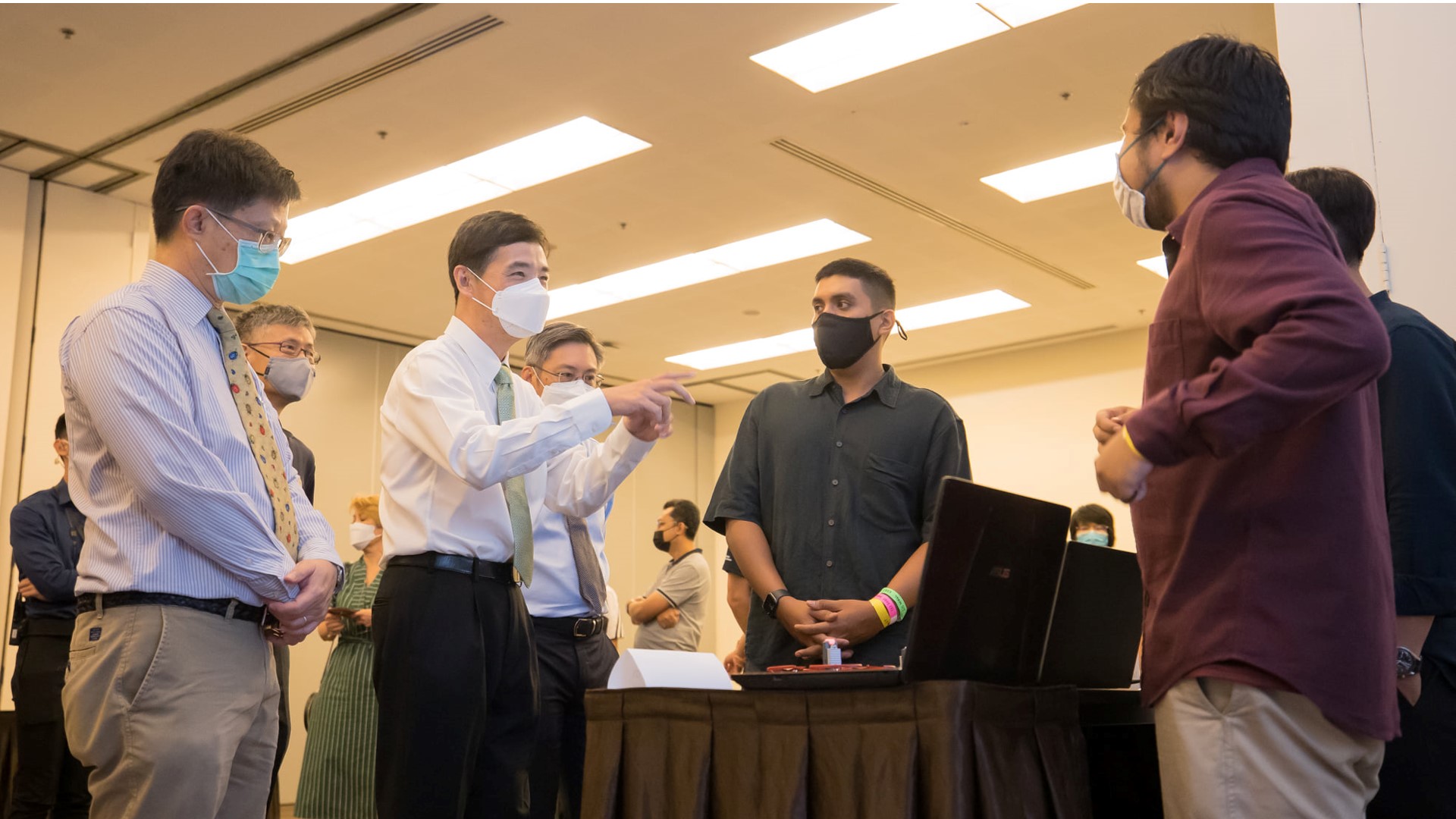
TEAM SIT interacting with guest-of-honour, Mr Heng Chee How, Senior Minister of State, Ministry of Defence. (Photo: DSO National Laboratories)

